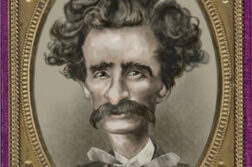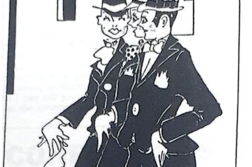The following essay will appear in the forthcoming Male Sex Work and Society, edited by Victor Minichiello and John Scott (Harrington Park Press). Reprinted with permission.
THE HISTORY of male prostitution extends deep into the past, mirroring the historical depth of what was referred to (wrongly, and with negative implication) as “the world’s oldest profession”: female prostitution. While records indicate the existence of male prostitution in some of the most ancient societies, one is immediately confronted by the slipperiness of the two terms: what is “male” and what is “prostitution”?
Perhaps the most widespread pattern of “male prostitution” practiced in Europe and the United States at the turn of the 19th century involved biological men who dressed like female prostitutes. Commonly known in the U.S. as “fairies,” these individuals worked variously in all-fairy brothels and saloons, as solo offerings in brothels that were otherwise devoted to female workers, or on the streets in either semi-segregated or “mixed sex” cruising zones. In some instances, the individuals may have tried to pass themselves off as biological women, though in most cases this seems not to have been the case.
Writing before the concept of “transsexuality” had arisen, early sexologists such as Magnus Hirschfeld and Havelock Ellis readily included this type of prostitution as an instance of “male prostitution” more generally. It is unclear how the subjects of these writings would have presented themselves, but most individuals who fit this description today would probably identify as transsexual or simply as females, placing their work outside of the category of “male prostitution” as such. These definitional uncertainties make it unclear whether what occurred in the late 1800s and early 1900s should be classified as “male prostitution,” and, if so, when exactly it ceased to be “male prostitution” and became something else.






